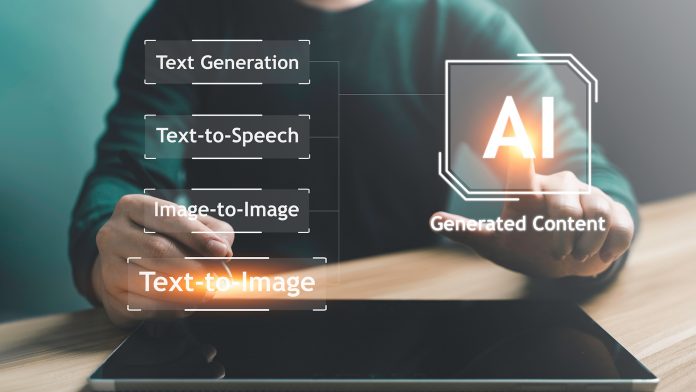Iain Brown PhD, Head of Data Science for SAS, Northern Europe, explores recent developments in AI and delves into the potential promises, pitfalls, and concerns around bias surrounding the future of generative AI.
The future of generative AI, underpinned by capabilities such as Generative Adversarial Networks (GANs) and Large Language Models (LLMs), has witnessed rapid advancements, revolutionising various sectors and transforming the way we interact with technology.
However, as the prevalence of generative AI and LLMs continues to rise, so does the risk of AI-generated fraud and concerns around bias.
The evolution of text-based generative AI
Text-based generative AI models, such as ChatGPT and Stable Diffusion, have already shown their potential in tasks like content creation and research assistance.
However, the future of generative AI holds even greater potential. Next-generation models are poised to better understand human psychology and the creative process in more depth, enabling them to produce written content that is not only technically sound but also deeply engaging, inspiring, and emotionally resonant.
These advancements in generative AI are made possible by training models on vast amounts of data and leveraging advanced Machine Learning algorithms. By analysing and learning from a massive amount of text, these models develop a nuanced understanding of language patterns, context, and human preferences.
This allows them to generate content that closely resembles human-generated text, opening up new possibilities in areas such as creative writing, marketing copy, and personalised communication.
Visual AI: Potential and pitfalls
In addition, when it comes to the future of visual AI, significant strides have been made in image and video generation. AI models can now generate realistic images and videos based on given prompts or learn from existing datasets to create new visual content.
The potential applications are vast, ranging from virtual reality experiences to computer-aided design and creative arts.
However, the rise of deepfakes and the spread of disinformation highlight the need for responsible development and usage of visual AI. Deepfakes are highly realistic manipulated media that can be used to deceive and manipulate people. They pose significant challenges to privacy, security and trust. Oversight, accountability, and considerations around bias and fairness are crucial to ensure that this technology is harnessed for positive purposes and does not contribute to malicious activities.
The future of generative AI in the Metaverse
The concept of the Metaverse, while not riding the wave of popularity it was a year or two ago, is all the same, being transformed by generative AI. The technology’s ability to accelerate the design and development of complex 3D environments and lifelike avatars promises to reshape our digital interactions and experiences. Within the Metaverse, users can navigate virtual worlds, interact with others, and engage in various activities.

Generative AI plays a vital role in creating and populating these virtual environments. It enables the generation of realistic landscapes, buildings, and characters, enhancing the immersion and visual fidelity of the metaverse.
However, as the Metaverse potentially becomes more integrated with our lives, driven on by the launch of new hardware like Apple’s Vision Pro, it is essential to strike a balance between innovation and trustworthy technology to create a Metaverse that is inclusive, safe, and respectful of user privacy.
Transparency, consent, and data protection should be key guiding principles in the development and deployment of the future of generative AI within the metaverse.
Revolution in audio, music, and voice
AI models have also made significant advancements in generating music and mimicking human voices. These developments have the potential to reshape the audio industry and creative processes associated with music production, voice acting and podcasting.
Generative AI can compose original music, adapt compositions in real time, and create soundscapes that react to user input. This technology opens up new possibilities for musicians, enabling them to explore uncharted territories and collaborate with AI as a creative partner. It can also democratise music production, making it more accessible to aspiring artists and enabling them to experiment with innovative sounds and genres.
Similarly, AI-powered voice synthesis has achieved remarkable fidelity, allowing machines to mimic human voices with astonishing accuracy.
This can have implications in various areas, from audiobook narration to virtual assistants. However, concerns regarding the future of AI when it comes to consent, and the potential misuse of voice synthesis technology need to be addressed proactively.
Generative design and gaming
Generative design is another domain that is revolutionising the way we approach product creation. AI tools are now capable of assisting designers and engineers in creating complex objects and systems more efficiently than ever before.
By leveraging generative AI, designers can explore a vast design space and uncover novel solutions that may have been overlooked through traditional design processes. This has the potential to enhance innovation, sustainability and efficiency in product development.
For video games, the future of generative AI has the potential to create dynamic and immersive experiences that adapt to players’ interactions in real time.
AI algorithms could generate procedurally generated worlds, characters, and quests, offering players unique and personalised gaming experiences. This approach reduces the reliance on scripted scenarios and challenges, making games more dynamic and replayable.
Concerns around the future of generative AI
As generative AI progresses, concerns around fairness, transparency, accuracy and privacy become increasingly critical.
The power of AI comes from its ability to learn from vast amounts of data, including copyrighted material and proprietary information. Issues such as plagiarism, copyright infringement, deepfakes, and misappropriation of brands and identities need to be addressed proactively. Responsible use and accountability frameworks are essential to ensure trustworthy development and deployment of future generative AI technologies.
Transparency and explainability of AI systems are crucial to building trust and accountability. Users should have a clear understanding of when they are interacting with AI-generated content and how their data is being used. Additionally, robust mechanisms for copyright protection, content attribution and intellectual property rights should be established to foster a fair and reliable AI ecosystem.
Fine-tuning: The future pathway for optimised and proprietary AI models
The future of generative AI is pointed squarely towards fine-tuning and pivoting away from general-purpose models. As transformative as these general models have been, it’s becoming increasingly clear that their true potential lies in their adaptability.
By fine-tuning these models, organisations can tailor them to specific tasks and challenges, optimising their performance and relevancy. The unique knowledge embedded during this process produces models that not only embody the organisation’s distinct expertise but are also proprietary in nature, safeguarding the organisation’s intellectual property.
As we move into the future, the shift towards fine-tuning will redefine the way organisations leverage AI, turning it into a strategic asset for innovation, competitive advantage, and intellectual property protection.
Balancing potential and responsibility
The future of generative AI holds immense promise, but it requires a delicate balance between technological advancements and remaining trustworthy.
Decision-makers and stakeholders have a vital role to play in embracing the transformative potential of generative AI while implementing robust frameworks for accountability, fairness and user protection. As we navigate this new digital frontier, it is crucial to prioritise its responsible use, foster collaboration, and shape a future where generative AI contributes positively to society while mitigating risks and pitfalls.
By striking this balance, we can harness the true potential of future generative AI while building a more equitable and responsible digital landscape for all.









